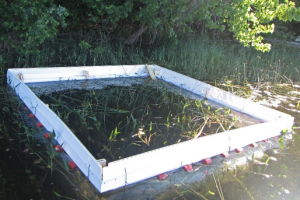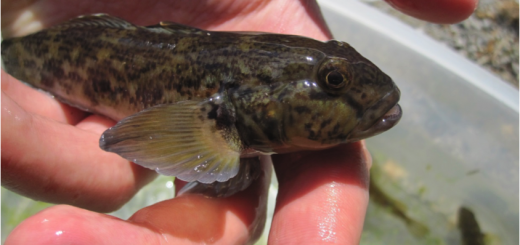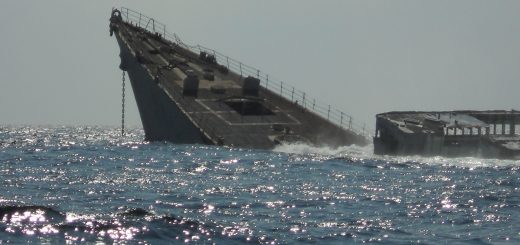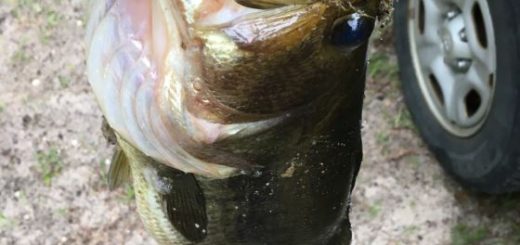Removing aquatic vegetation is not desirable for juvenile largemouth bass
Macrophytes (aquatic vegetation) are used by many fish species as juvenile nursery habitat and refuge from predators. Lakes in the American Midwest are characterized by abundant macrophyte communities with many being privately owned. In many of these lakes, landowners remove macrophytes by chemical or mechanical methods. Research regarding the effects of macrophyte reduction on fish populations is lacking, creating a knowledge gap when it comes to regulation by state and federal agencies.
Largemouth bass (Micropterus salmoides) (Figure 1) are the most popular freshwater sportfish throughout the contiguous United States, making them a valuable species to manage. Juvenile largemouth bass use macrophytes as refuge from predators as well as to locate food sources that live there. Researchers from Michigan State University examined the effects of macrophyte removal on juvenile largemouth bass in Chancellor Lake, Michigan. The researchers were interested in how different densities of macrophytes affect juvenile largemouth bass growth rates and diet.

Figure 1. Juvenile largemouth bass among macrophytes. Reproduced with permission from Nohner et al. 2018.
To study this effect, researchers constructed twelve in-lake experimental enclosures along shoreline habitat. Densities of low macrophytes (~3% coverage), edge (~40% coverage), and high (~60% coverage), were measured before choosing enclosure sites and maintained once a site was chosen (Figure 2). Juvenile largemouth bass were added from July to September 2014 at an appropriate density identified in previous literature. At the end of each one-month experimental period, juvenile largemouth bass lengths and weights were measured and the fish were euthanized and frozen for stomach content analysis. Habitat was also assessed, specifically macrophyte coverage, water quality and available prey to identify potential differences in growth of juvenile largemouth bass between enclosures.



Figure 2. Left: Low macrophyte coverage, Middle: macrophyte edge and Right: high macrophyte coverage. Reproduced with permission from Nohner et al. 2018.
Overall, 153 juvenile largemouth bass were recovered from the experimental enclosures. Stomach content analysis found that prey fish made up the lowest percentage by number, but the highest by weight, of juvenile largemouth bass diets. In addition, largemouth bass in macrophyte edge and high-coverage treatments were more likely to consume prey fish. Juvenile largemouth bass from high macrophyte density and macrophyte edge treatments also grew longer and gained more weight than juvenile largemouth bass from low macrophyte density treatments.
This study provides evidence that juvenile largemouth bass are hindered by the removal of macrophytes from shoreline habitat in natural lakes. Management agencies can use this information to justify maintaining at least 60% of the macrophytes in a lake. Homeowners are reducing macrophytes for aesthetic and recreational purposes in many lakes. This research highlights the need for managing macrophytes in lakes where largemouth bass are found.
Reference
Nohner, J.K., W.W. Taylor, D.B. Hayes, and B.M. Roth. 2018. Influence of aquatic macrophytes on age‐0 Largemouth bass growth and diets. Transactions of the American Fisheries Society, 147(4): 758-769.



